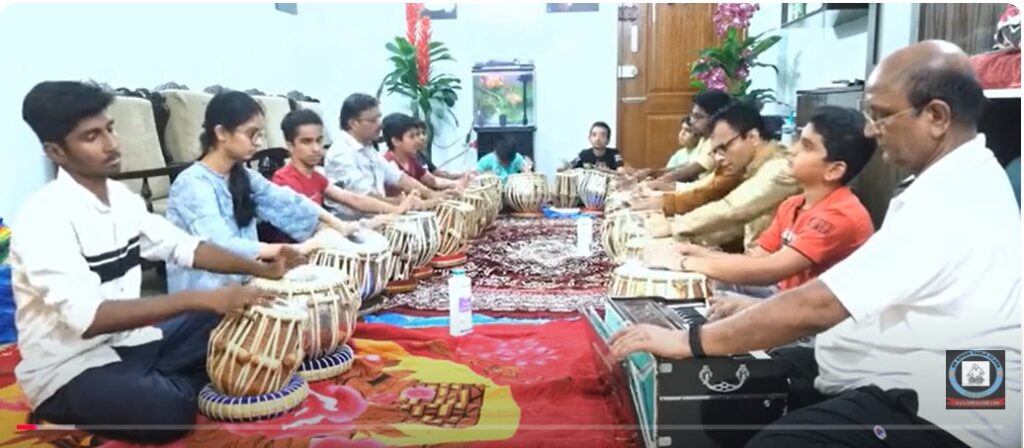Matt Taal Theka, The structure you described seems to reference a specific rhythmic cycle (taal) in Indian classical music with 18 beats (matras), divided into 9 sections. The information provided specifies the placement of taalis (claps) on beats 1, 5, 7, 11, 13, and 15, and khaalis (wave gestures, indicating an empty or silent beat) on beats 3, 9, and 17.
Introducing the-
Matt Taal is a rhythmic cycle (taal) with 18 matras (beats) and 9 divisions. It has claps (taali) on beats 1, 5, 7, 11, 13, and 15, and waves or empty beats (khaali) on beats 3, 9, and 17. This taal is used in Indian classical music to create intricate rhythmic compositions.
https://www.youtube.com/@BhagawanSingh
https://www.facebook.com/sbsinghtablaguru

Matt Taal is a complex and uncommon rhythmic cycle in Indian classical music, comprising 18 beats (matras) and divided into 9 vibhags (divisions). Each vibhag has varying numbers of beats, creating a unique structure that challenges both the performer and listener to follow its intricate rhythm.
Detailed Breakdown:
- Beats (Matras): 18
- Divisions (Vibhags): 9
- Taalis (Claps): 1, 5, 7, 11, 13, and 15
- Khaalis (Empty Beats): 3, 9, and 17
Structure of Matt Taal:
Taali (Clap): A strong accent is placed on specific beats (matras) of the taal to signify key points in the rhythmic cycle. For Matt Taal, the claps occur on beats 1, 5, 7, 11, 13, and 15.
- Khaali (Wave): A khaali is a wave of the hand instead of a clap, signifying a lighter or “empty” beat. In Matt Taal, the khaalis are positioned on beats 3, 9, and 17.
Application:
Matt Taal is used in Indian classical music to accompany both instrumental and vocal performances. Its 18-beat cycle allows for complex rhythmic improvisation and interaction between the performer and the tabla player. Due to its irregular division and placement of claps and khaalis, it requires a high level of skill to maintain the rhythm and perform compositions within it.Performance Context:
In Instrumental Music: Matt Taal may be used in sitar, sarod, and tabla solos, providing a challenging framework for rhythmic exploration. In Dance: Classical Indian dance forms such as Kathak may also incorporate Matt Taal, emphasizing precise footwork and complex rhythm.

